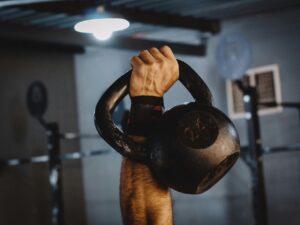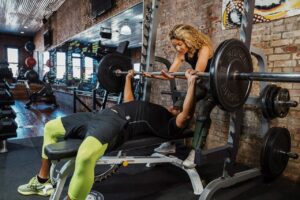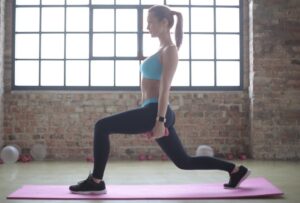A popular way to classify resistance training exercises is based on their impact and what area of the body they train.
There are two categories a movement can fall into:
- Compound
- Isolation
Read on to find out about:
- Compound vs. isolation exercises
- Their unique advantages
- The best compound and isolation exercises for the chest, back, shoulders, biceps, triceps, abs, glutes, and legs
- List of compound and isolation exercises
Compound vs. Isolation Exercises
Column 1: Compound exercises, also known as multi-joint movements, train more than one muscle group and involve two or more joints.
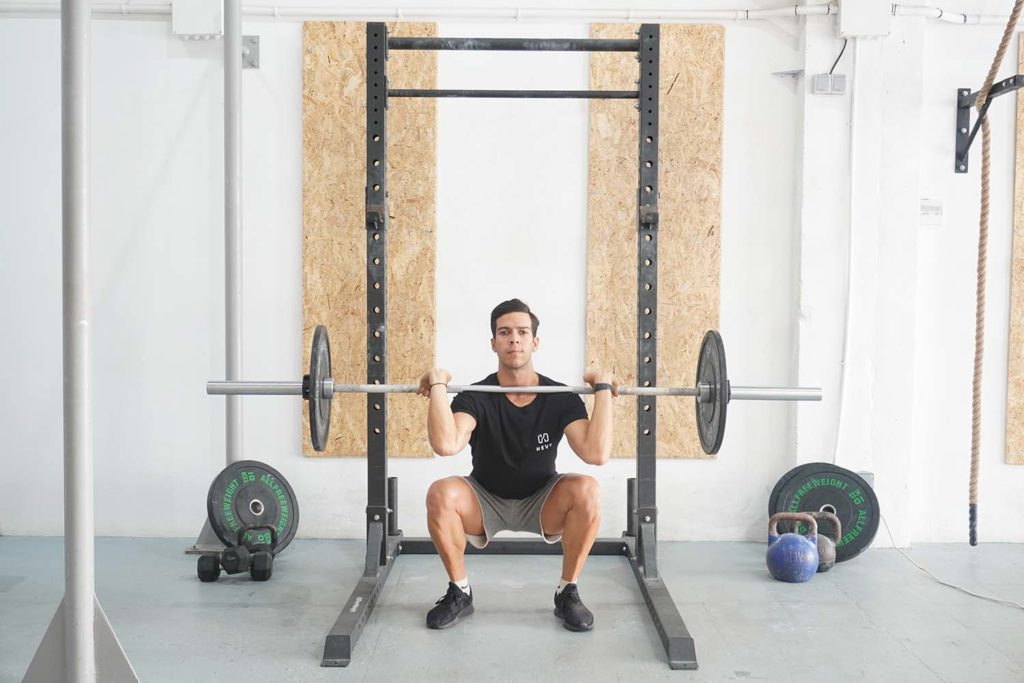
A notable example of a compound movement is the barbell front squat. The exercise primarily trains the quadriceps and works the calves, hamstrings, glutes, midsection, back, shoulders, and arms. It involves the ankles, knees, and hip joints.
There is usually one prime mover and multiple other muscles that assist during a compound exercise. Let’s take the bench press as an example (1).
- Primer mover: chest (pectoralis major)
- Secondary muscles: triceps and deltoids
- Stabilizing muscles: back, midsection, and lower body
Column 2: Isolation exercises, also known as single-joint movements, train a single muscle group and involve one joint.
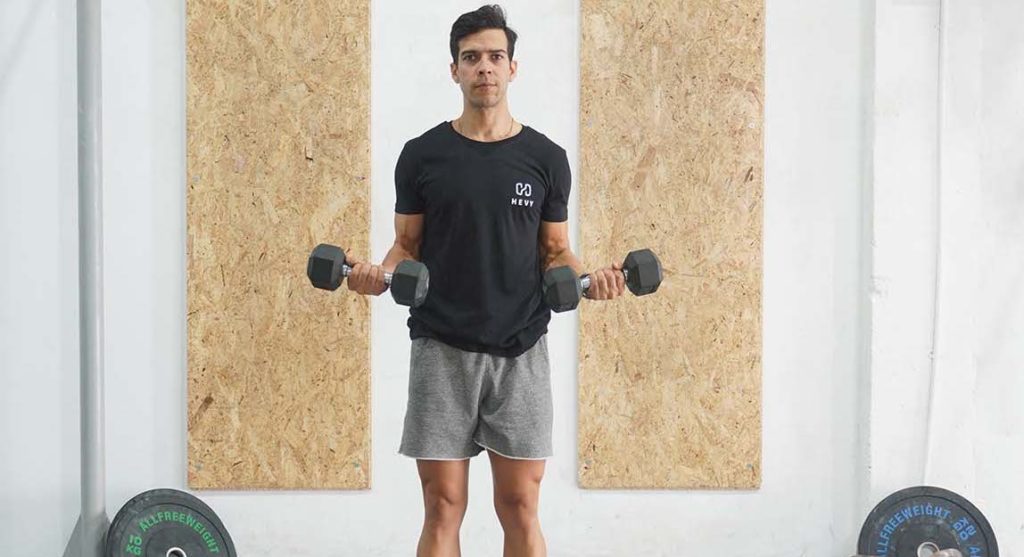
An example of an isolation exercise would be a simple dumbbell curl. The movement trains one muscle (the bicep) and involves one joint (the elbow) (2).
Unlike compound exercises that recruit many muscles, the objective of isolation exercises is to force a single muscle to do all the work and receive all the stimulation.
If you are wondering if an exercise is a compound or isolation, ask yourself: how many joints are involved and how many muscles am I training? You are doing an isolation exercise if you only use one joint to train one muscle.
In contrast, the exercise is compound if you use two or more joints.
Benefits Of Compound Exercises
1. They Develop Multiple Muscles Simultaneously
A notable benefit of compound exercises is that you simultaneously strengthen and develop several muscle groups.
Take the deadlift as an example. The movement pattern develops your entire posterior chain (calves, hamstrings, glutes, and entire back), arms, shoulders, midsection, and quadriceps (3).
2. They Build Strength More Efficiently
Having multiple muscle groups working simultaneously means you can handle heavier weights more safely and build strength (4).
Take the dumbbell fly––a chest isolation exercise. Even advanced trainees likely won’t be able to lift more than 40 to 60 pounds (18 to 27 kg) with great form after years of consistent training.
Now, let’s have a brief look at the bench press. While not everyone can press a lot of weight, lifting 225 to 315 lbs (102 to 142 kg) is not uncommon after a few years of structured training.
3. You Can Track Progress More Efficiently
The next notable benefit of using more weight is that you can track your training progress and notice improvements more frequently.
You might not be able to lift more weight every week, but improvements occur more readily, which can motivate you to keep returning to the gym.
You can use the Hevy app to log your workouts and track how your performance improves in the long run.
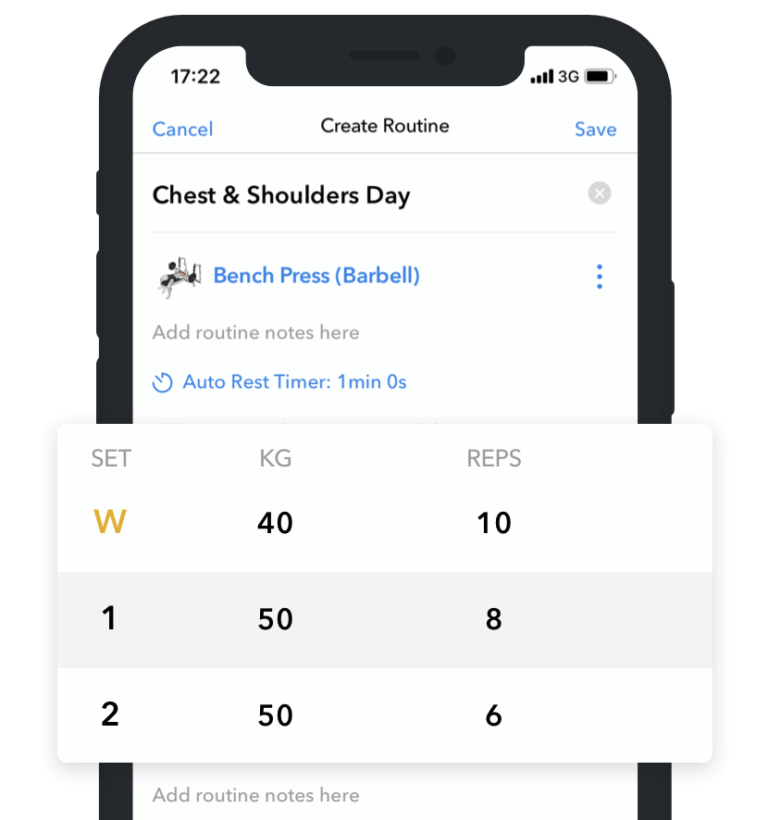





Hevy – Workout Tracker
Create your workout with Hevy, and track your progress
4. Sport-Specific Benefits
Most movement patterns result from synergy: the combined effort of two or more muscle groups. A few notable examples of everyday activities include walking, jogging, jumping, lifting something off the floor, and throwing an object.
Compound exercises naturally train our muscles, which develops whole-body strength, power, speed, and overall athleticism, making us better at sports (5). Tasks like carrying bags of groceries, picking up objects off the floor, and carrying your sleeping child to their room become more accessible.
In addition, training multiple muscle groups simultaneously develops intermuscular coordination, which measures how well individual muscles can coordinate to produce an outcome.
5. Time-Efficient Training
The next notable benefit of compound exercises is that you train your muscles sufficiently and provide the necessary stimulus for improvement in less time.
People often rely on complicated exercise programs and circuits for ‘efficient’ training but fail to realize that four to five heavy sets of deadlifts can promote muscle and strength gain in less time.
Quick Tip: Combine two to four compound exercises into a workout, and you have the foundation of efficient programs that drive significant progress.
Drawbacks of Compound Exercises
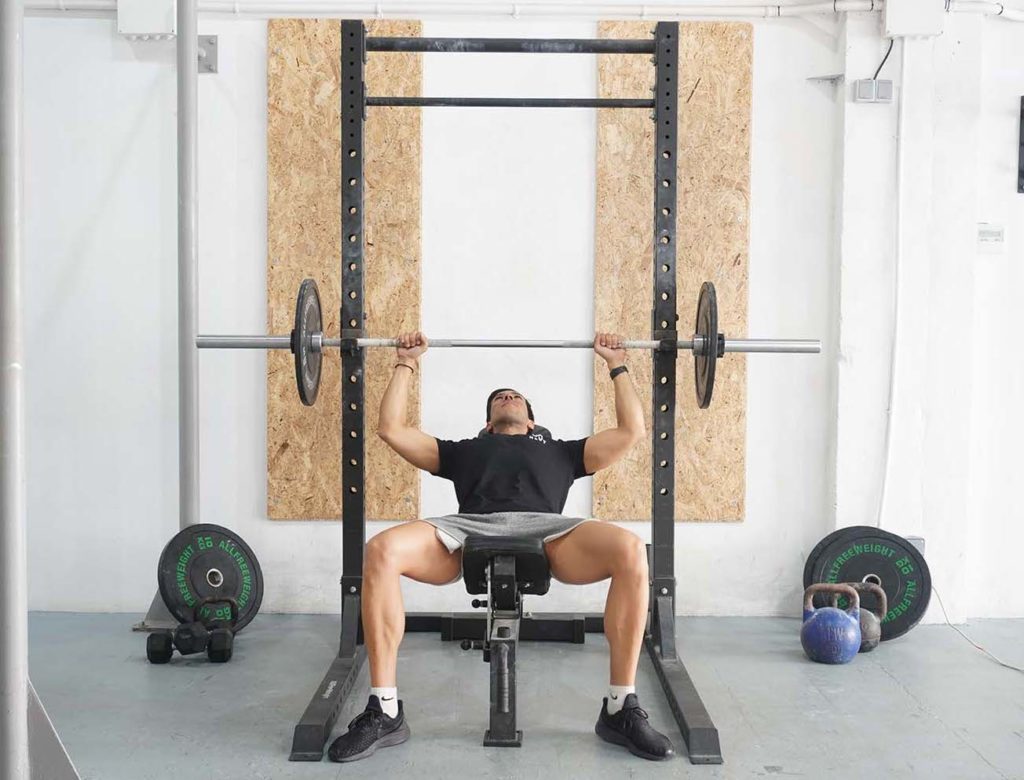

1. They Are More Challenging to Learn
A notable drawback of compound exercises is that it takes longer to master them, and the possibility of making a mistake is more significant.
Take the squat as an example. At first glance, the exercise is straightforward. But upon closer inspection, you realize how many things you need to master:
- Proper bar position on your upper back
- Shoulder retraction
- Bracing your midsection
- Finding the right stance
- Squatting to the correct depth
- Maintaining your stability as you do reps
These and other details matter when doing compound exercises; even minor errors can make your training less effective and more likely to result in an injury.
2. They Can Be Mentally Draining
The second issue with compound exercise is psychological demand. Compound exercises might not look that different from isolation movements on paper, but doing them is more difficult.
Deadlifts are a prime example, and most experts recommend doing the exercise only once weekly to avoid burnout.
Benefits of Isolation Exercises
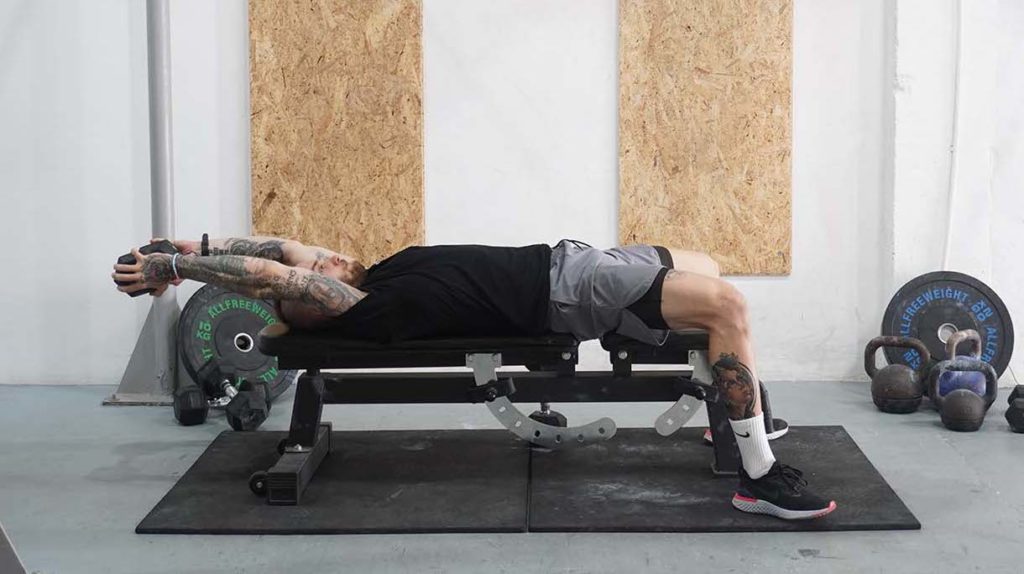

1. Necessary for Optimal Growth
Compound exercises are excellent for muscle and strength gain, but they are also demanding, and solely focusing on them can increase the risk of overtraining.
The purpose of isolation exercises is for you to accumulate extra training volume (sets) without getting too tired.
Let’s take the lower body as an example. You can do two to three compound exercises for your glutes, hamstrings, and quadriceps and finish your session with isolation work (leg curls, leg extensions, calf raises, etc.) to drive more growth.
2. Focus Your Attention On a Specific Area
Another notable benefit of isolation exercises is that you can temporarily direct your entire focus to a specific area. Doing so provides a mental break from heavy training and helps you improve your mind-muscle connection.
An isolation exercise can help you achieve a muscle pump (temporary increase in muscle size), which is also fulfilling and a great way to finish your workouts.
3. Provide a Break From Intense Training
Isolation exercises provide a much-needed break from intense training while still helping you progress.
For example, doing a few compound exercises would leave most people feeling drained and eager to go home. But finishing the session with some isolation work can be an excellent way to relax and do a few extra sets to stimulate growth.
4. They Are Beginner-Friendly
A good way for anxious beginners to get into fitness and become more comfortable in a gym is by doing isolation exercises. These movements are much easier to learn and help beginners make some initial progress.
Instead of learning intimidating movements like the deadlift and pull-up, a beginner can start with the simple things: bicep curls, lateral raises, leg extensions, etc.
Drawbacks of Isolation Exercises
1. It Takes Longer to Provide the Same Stimulus
As discussed in an earlier point, compound movements are time-efficient because you get to train multiple muscle groups simultaneously.
In contrast, isolation exercises aren’t time-efficient because you’re limited to one muscle per movement. So, if you want to train four muscle groups, you must do at least four exercises, which takes time.
2. The Overloading Potential Isn’t As Good
Another drawback of isolation exercises is that the overloading potential isn’t nearly as good as that of compound movements.
Training a single muscle group means you cannot use as much weight and improvements occur more slowly, typically in the form of doing more reps.










Hevy – Workout Tracker
Create your workout with Hevy, and track your progress
The Best Compound and Isolation Exercises For All Muscle Groups
There are countless exercises to pick from, so narrowing your choices and putting together effective workouts can be challenging.
Here are two lists of the best compound and isolation exercises:
Best Compound Exercises
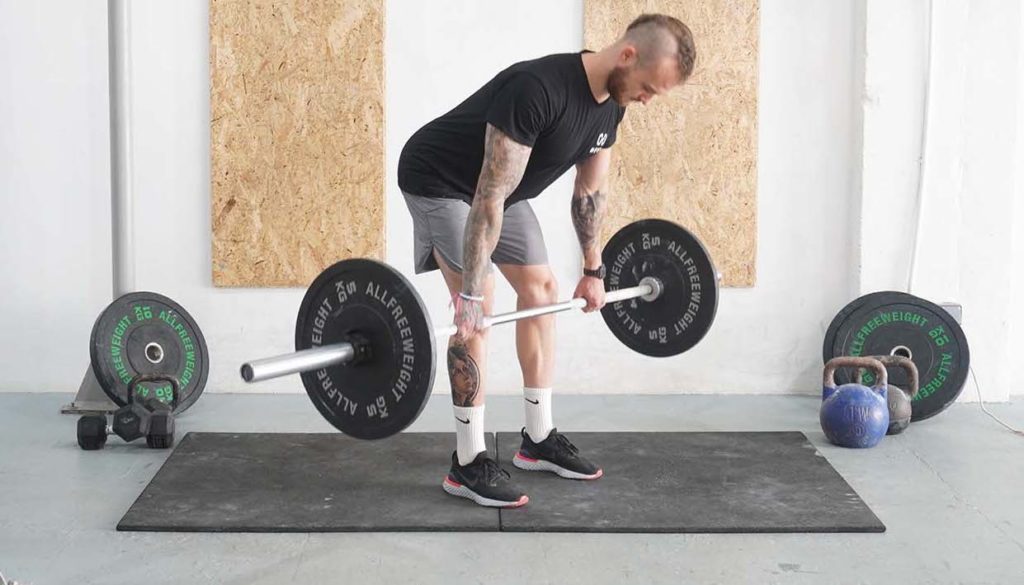

- Abs – ab rollout, farmer’s walk, hanging knee and leg raises, front squat, goblet squat, pull-up/chin-up, push-press, standing overhead press, single-leg deadlift, etc.
- Back – pull-up/chin-up, bent-over barbell row, T-bar row, dumbbell row, lat pulldown, cable rows, deadlift, rack pulls, etc.
- Biceps – pull-up/chin-up, bent-over row, T-bar row, inverted row, bodyweight bicep curls, etc.
- Chest – decline/flat/incline dumbbell and barbell press, push-ups, dips, machine chest press, etc.
- Glutes – hip thrust, glute bridge, single-leg glute bridge, deadlift, Romanian deadlift, sumo squat, etc.
- Legs – barbell squat, front squat, goblet squat, leg press machine, hack squat, Bulgarian split squat, Romanian deadlift, etc.
- Shoulders – standing/seated barbell and dumbbell overhead press, push-press, pike push-up, etc.
- Triceps – dumbbell and barbell bench press, close-grip bench press, dumbbell crush press, diamond push-up, etc.
Best Isolation Exercises
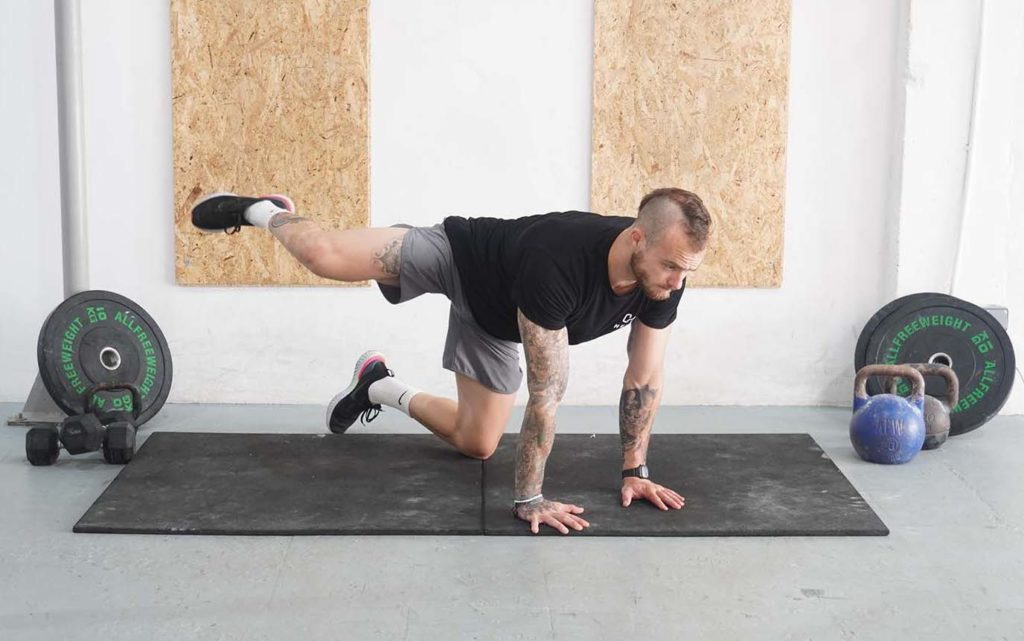

- Abs – lying knee and leg raise, crunch, sit-up, Russian twist, cable crunch, etc.
- Back – cable straight arm pulldown, seated back extension, dumbbell pullover, etc.
- Biceps – dumbbell/barbell/machine/cable/plate curls, dumbbell hammer curls, incline bench curls, crucifix curls, concentration curls, etc.
- Chest – dumbbell/kettlebell/cable chest fly, machine fly (pec deck), etc.
- Glutes – glute kickback, donkey kickback, fire hydrant, seated hip abduction, etc.
- Legs – leg extensions, leg curls, standing/seated calf raises, etc.
- Shoulders – front and lateral raises with dumbbells/kettlebells/weight plates/cables, face pulls, reverse fly, etc.
- Triceps – dumbbell/barbell skullcrusher, rope cable tricep extension, dumbbell tricep kickback, etc.
Check out the following resources for a lot more information on the best exercises for each muscle group, how to add them to your training, and much more:
- The Top 7 Isolation And 7 Compound Ab Exercises
- 10 Compound and 4 Isolation Back Exercises for an Impressive V-Taper
- 8 Isolation and 7 Compound Bicep Exercises For Big Arms
- 8 Compound and 6 Isolation Chest Exercises for Strong Pecs
- 5 Isolation and 9 Glute Compound Exercises for a Head-Turning Behind
- 7 Isolation and 8 Compound Leg Exercises for a Strong Lower Body
- 8 Isolation and 9 Compound Shoulder Exercises
- 7 Isolation and 7 Compound Tricep Exercises For Big Arms
Conclusion
Compound and isolation exercises have their uses in any good training plan.
Whether your primary goal is to get stronger or build muscle, doing both types of movements will keep your training diverse, fun, and effective.
Compound exercises are the foundation of your training plan, whereas isolation movements provide the finishing touches, allowing you to get more out of each session.


